The Layout -
The layout of any motherboard is important. Even simple mistakes in component placement or the signal traces can cause major issued in performance and stability. With the ATX form factor we find that this is even truer; the devices we drop onto them demand more and cleaner power while the signal speeds push faster and faster. The P8Z77-V is a full sized ATX board which gives Asus a little more room to drop in features, but also to make doubly sure that their traces are laid out right. We have talked about this before and cannot stress it enough. If you lay your traces out properly you can overcome many performance and stability issues without the need to continuously reprogram your BIOS to compensate. Asus has also moved to a new style of trace layout in anticipation of improvements in DDR speeds. This is not only going to benefit you today, but in the future as things speed up.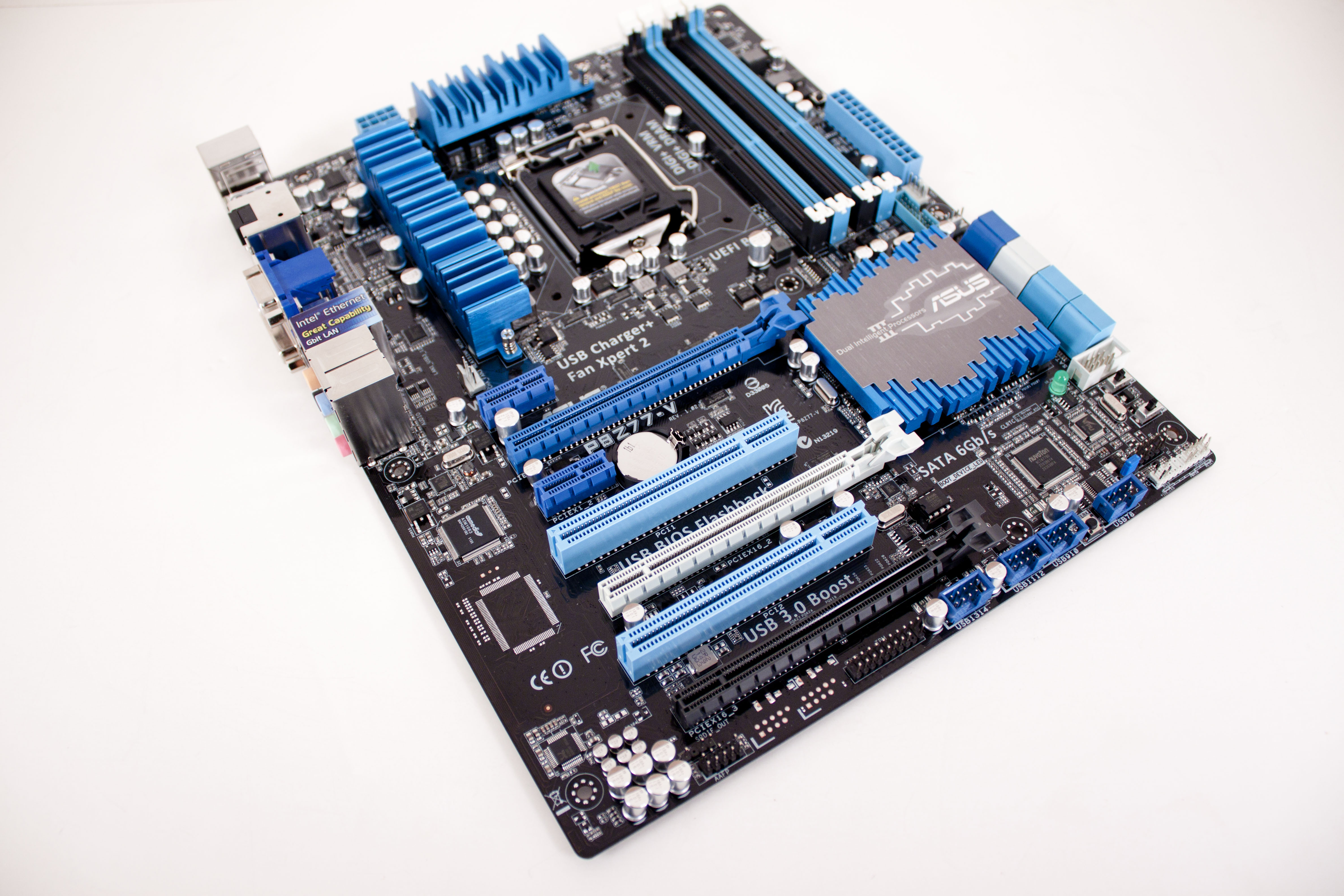
Kicking of our typical walk around we see that the P8Z77-V has a very typical layout for an ATX board. You have the four RAM slots in the upper right-hand corner along with the 24-pin ATX power connector and a USB 3.0 header squeezed in. You also get a MemOK! Button here which can shift between profiles or just find the best timings to get your memory working. Asus has also move to all solid capacitors on their boards (almost the entire line up). These are going to give you better product life along with a performance benefit.
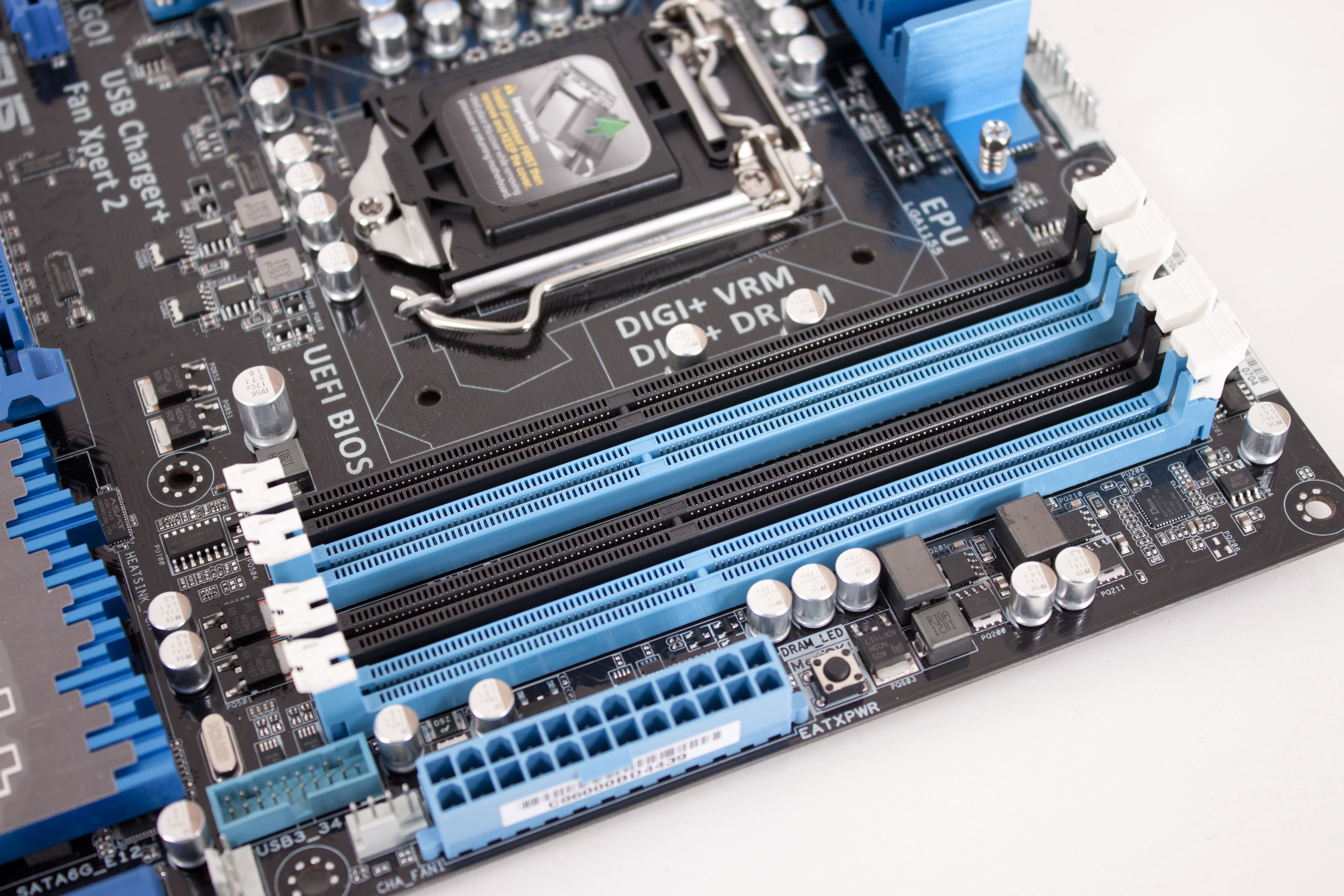 |
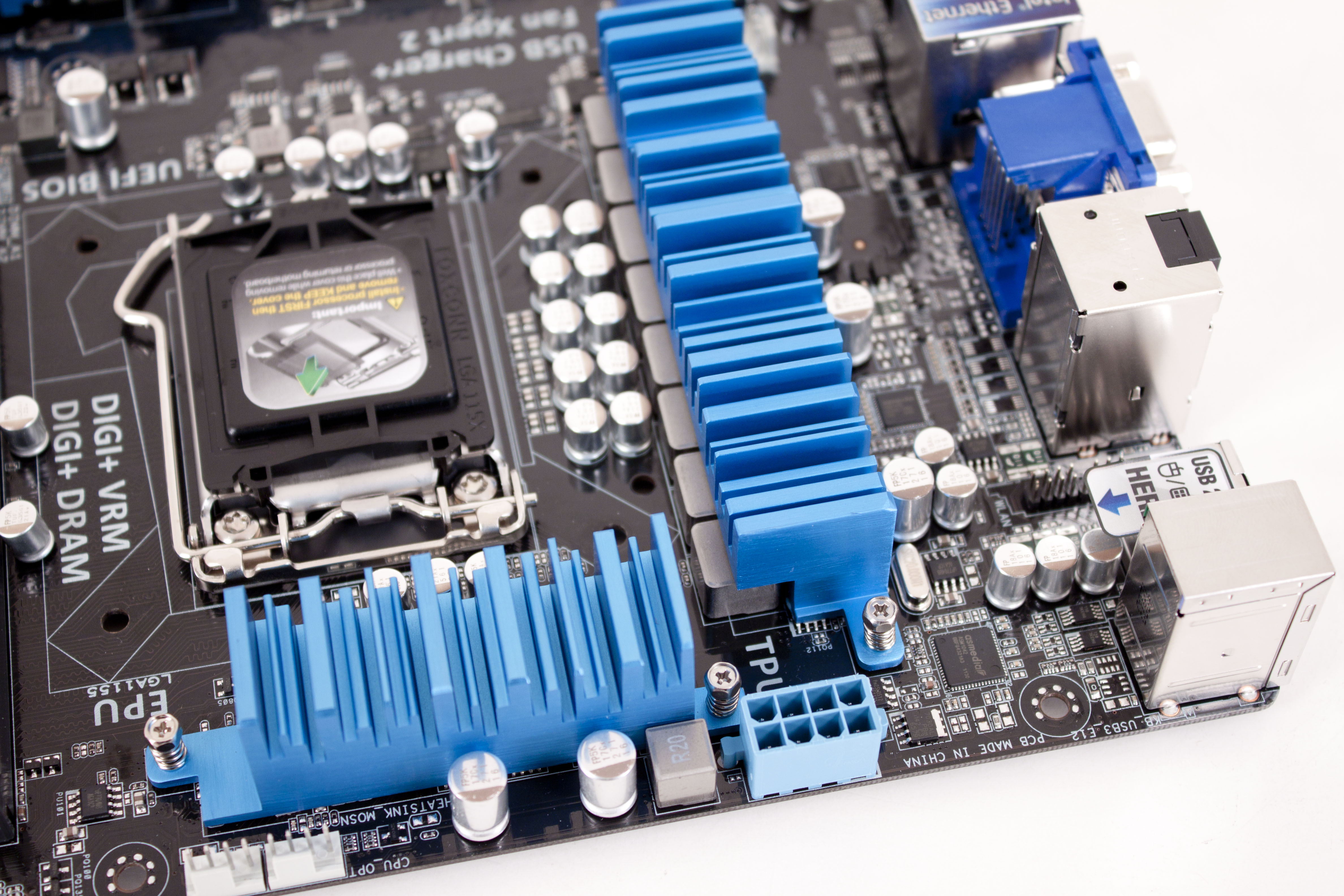 |
Looking at the top of the board we find a nice feature that we even saw on the smaller M Pro. Asus has thrown in two CPU fans and labeled them as such. This is great for either the self-contained water cooling rigs or for air coolers that support two fans. You do not have to route fan cables all over your board and can keep things cleaner. The 8-Pin aux power connector has also been given a little more room, but we still recommend using an extension cable just to make things that much easier.
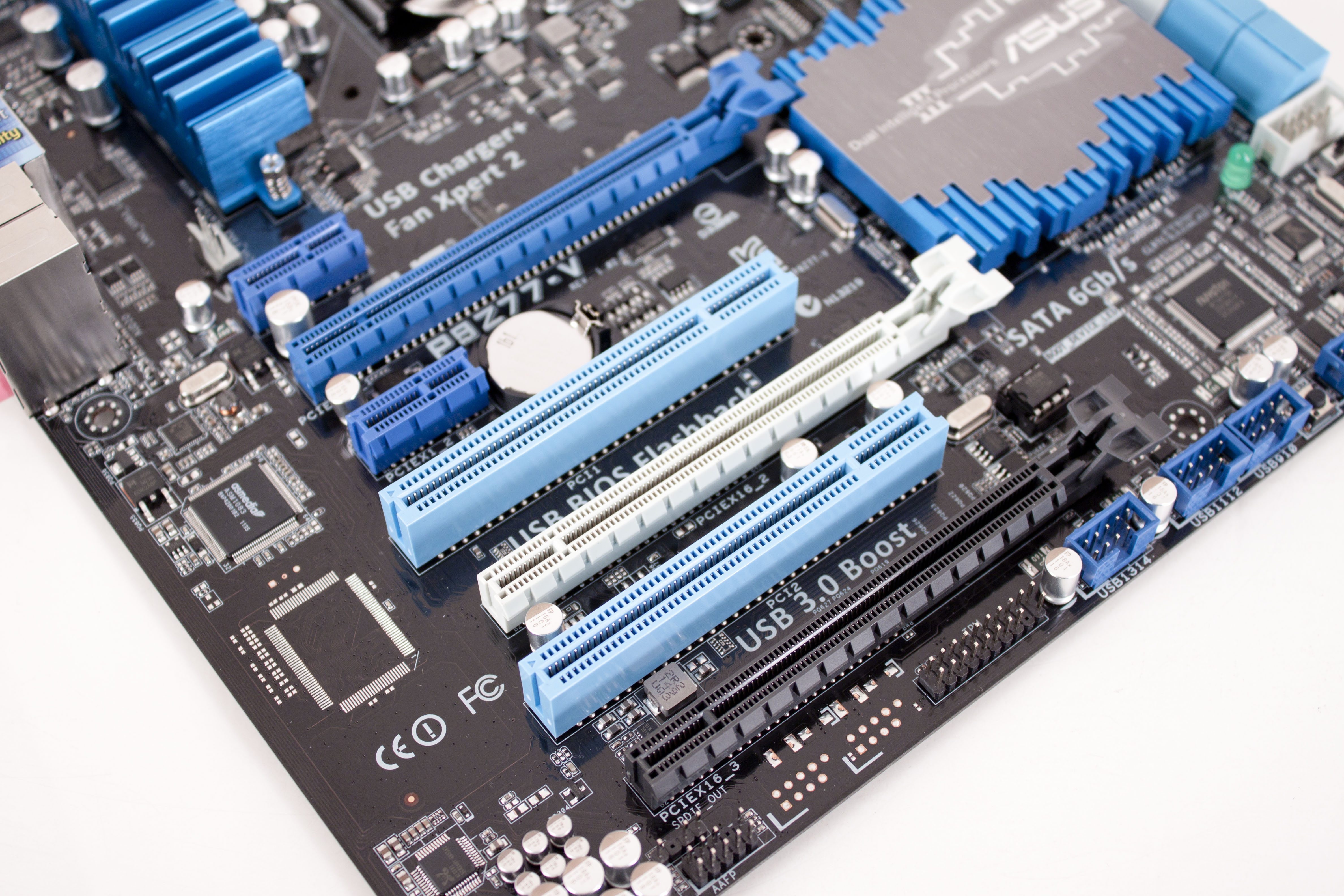 |
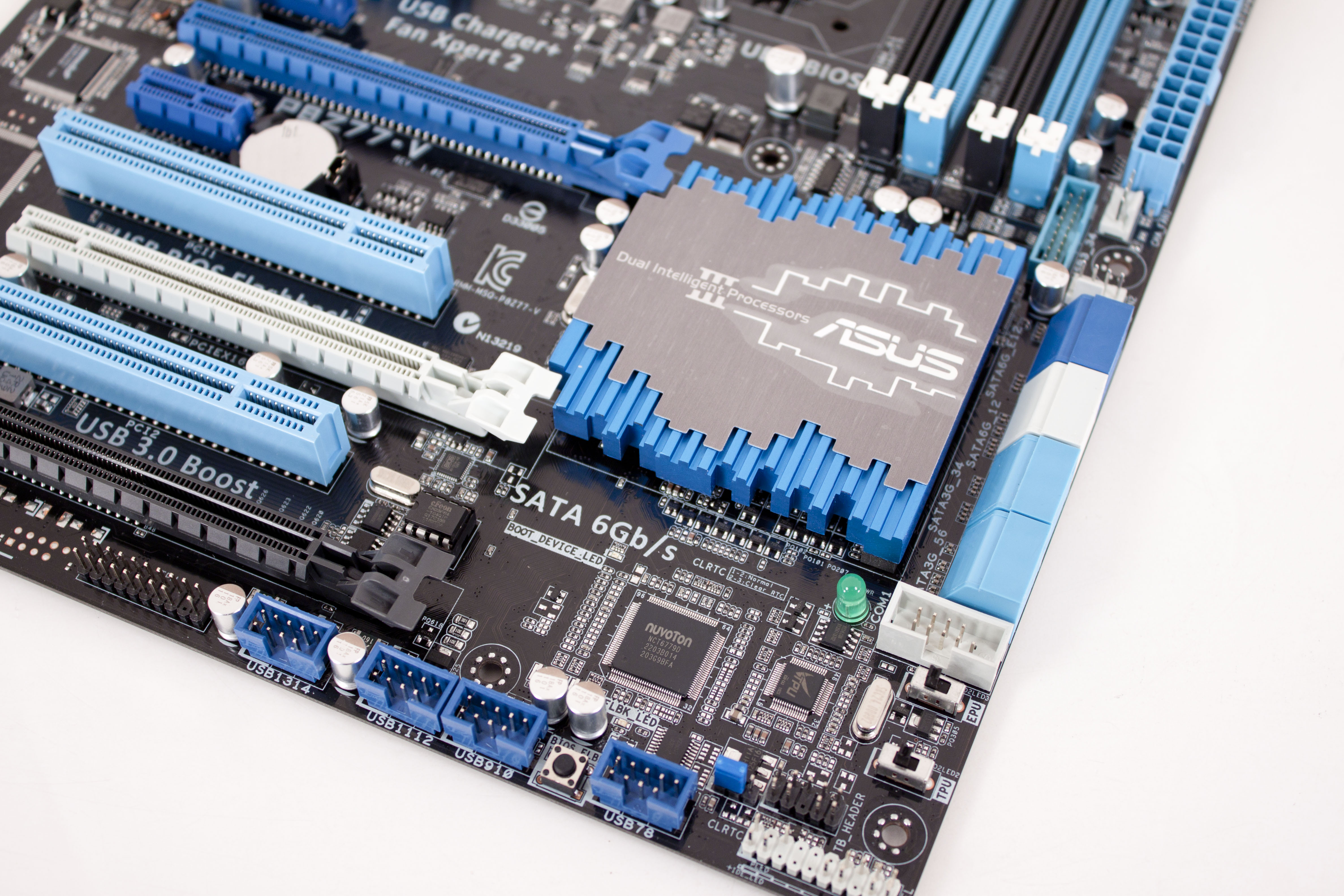 |
Dropping down to the peripheral slots we find that Asus has given you three x16 mechanical slots. Only two of these is going to support PCIe 3.0 (x16 slots one and three) and only one will ever be fully x16 electrical. The others are only pinned out for x8 maximum if you are running Gen 3 SLI you will want to use slots one and three and then will get x8 out of both. For those interested in legacy devices there are two PCI 2.1 ports you can use. Taking our last turn around the P8Z77-V we find the Z77 chipset under a large and blocky heatsink. We do hope that this will be able to keep things cool as we have found that the Z77 does run a little hot. The P8Z77-V also increases the number of available SATA ports you have with a total of 8 ready for you. Four are SATA 2.0 from the PCH while the other four are SATA 3.0 (The two white are from the PCH and the two dark blue are from an ASM1061 SATA 3.0 controller). 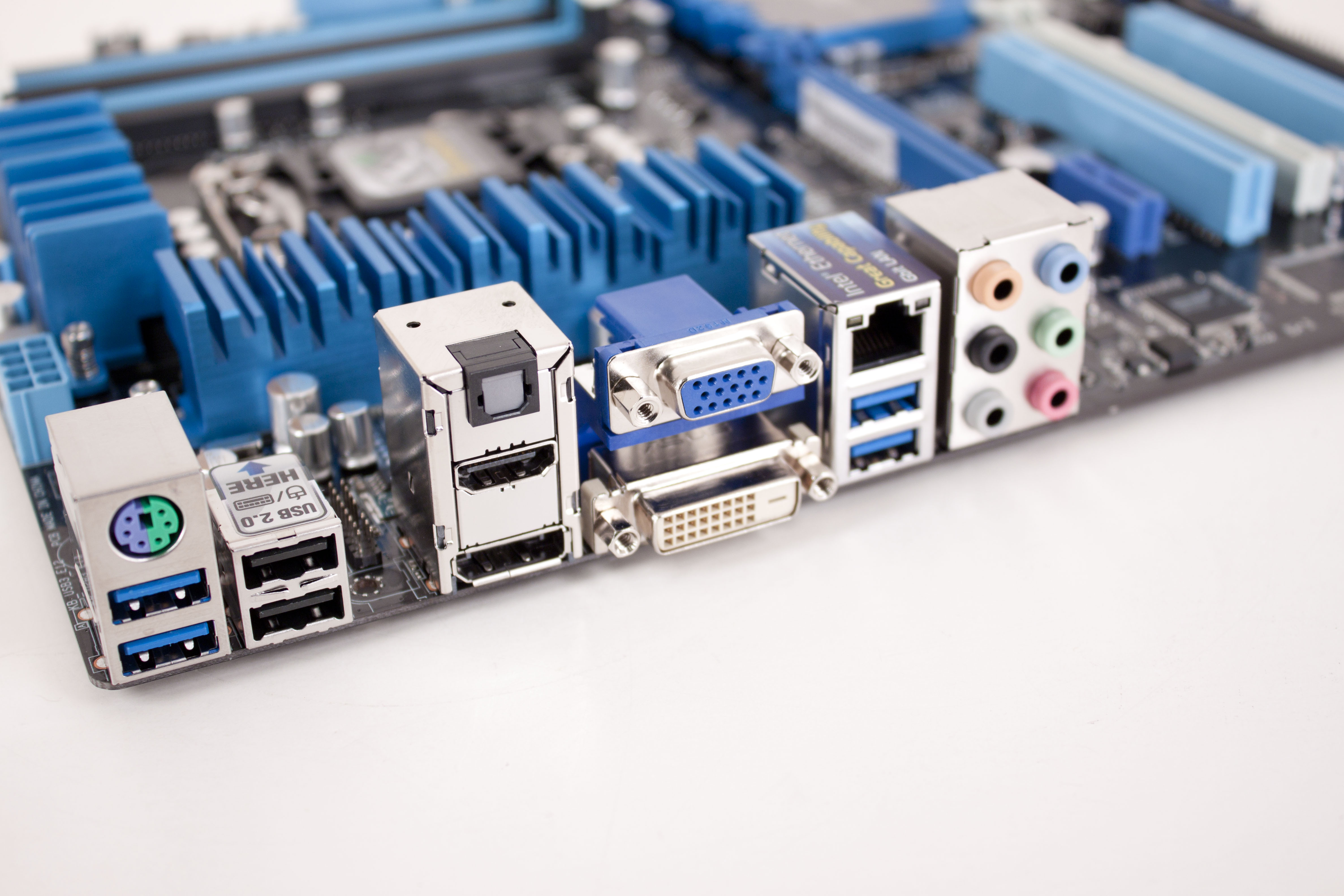
Looking at the I/O ports we notice something a little odd, there are only two USB 2.0 ports on the back. Normally motherboards in this range are loaded up with USB ports, but that is not the case here. These two ports are also labeled for use with your keyboard and mouse. If you are still using PS/2 you do have a single dual purpose here. As with other Asus Z77 motherboards you have both ASMeida and Intel USB 3.0 ports available to use (and both work with USB 3.0 Boost). For video out you have a nice selection of options and of course that Intel networking controller rounds everything out.



